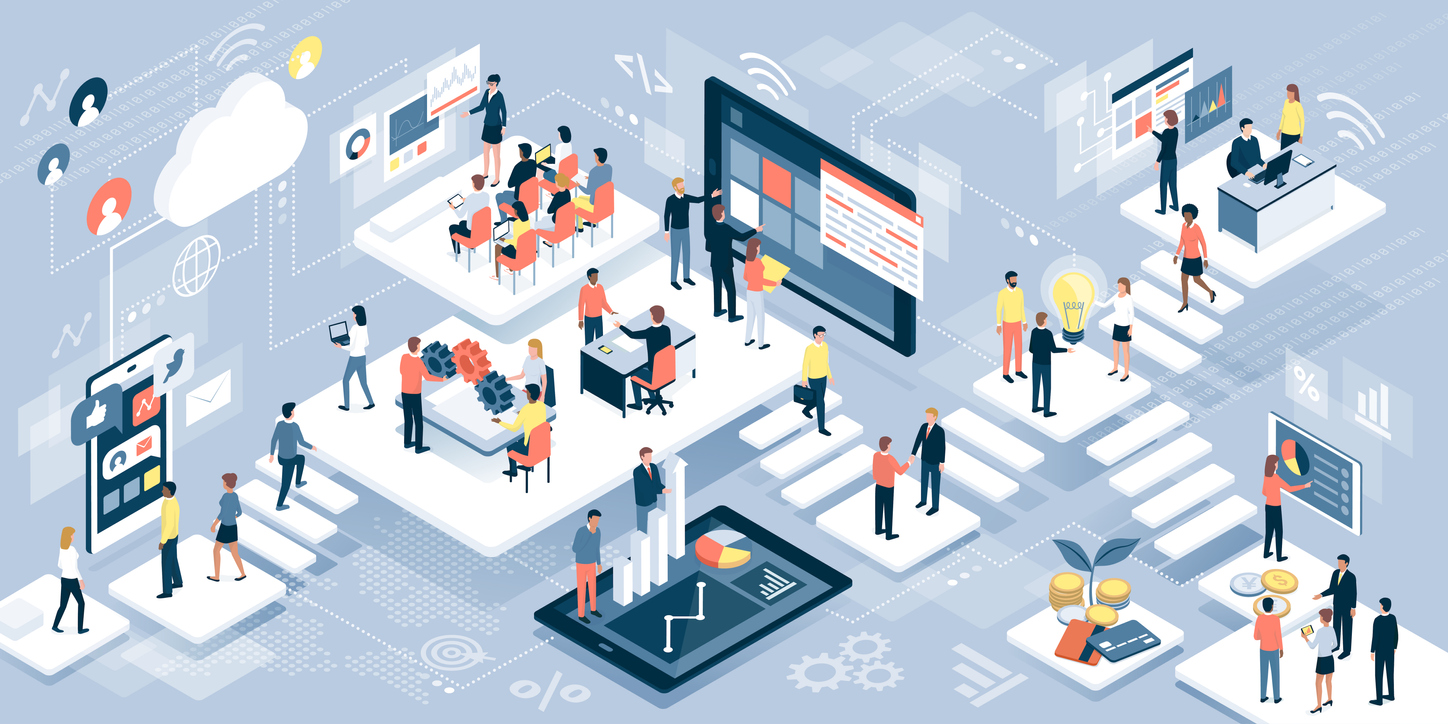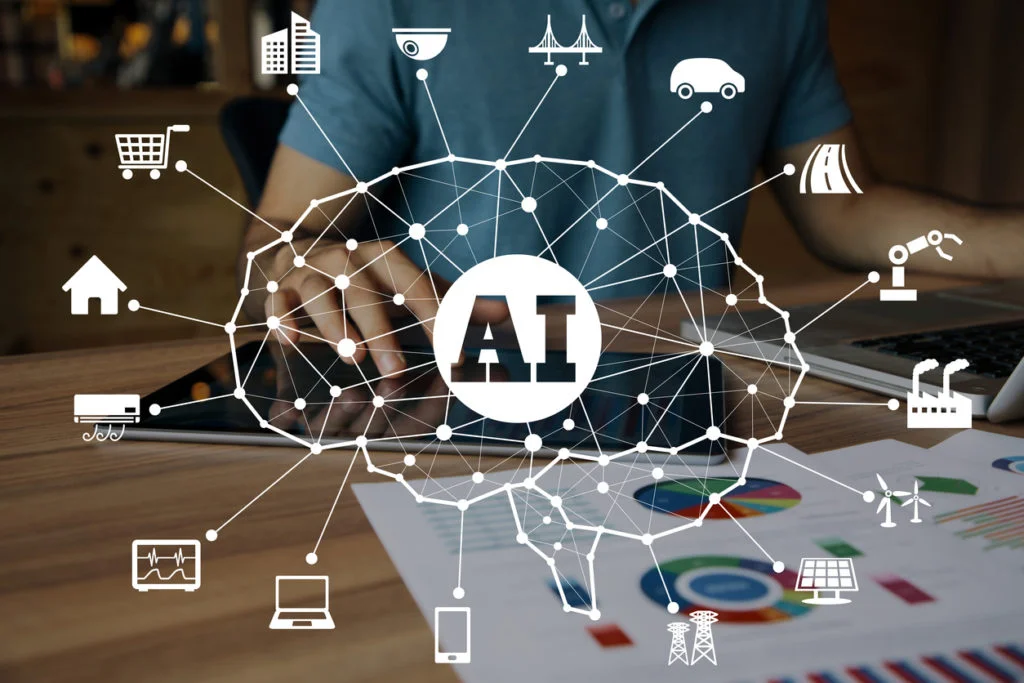Traditional software development cycle usually goes through the following process: it typically starts with a meeting involving all stakeholders to establish the goals and vision for software development. This is followed by gathering requirements for the project, defining the business strategy, software user interface and architecture design, development, functional and security testing, and finally delivery of the software.
The process for developing traditional software has a high ratio of success, especially when agile methodology is used. However, it does not necessarily work for developing AI enabled software products.
Challenges in AI Development and Implementation
Following are some of the major challenges in the development and implementation of software using AI.
1. Lack of Data Access
AI readiness requires you to have access to the right data. Almost all enterprises have huge amounts of data scattered across systems. Accessing all this data at a granular level is the challenge here. This means that to successfully leverage AI, an organization with several years of data across disparate systems must be able to access data—the right data—at a granular level. Therefore, the primary challenge to overcome in AI development and implementation is ensuring easy access to data collection and storage systems, and support for highly granular data.
2. Lack of Infrastructure
Not only do you need to ensure access to the right data but you also need to ensure that the data is ready for consumption by AI algorithms. You also need to ensure the ability to process the algorithms quickly. To overcome this challenge, many organizations adopt cloud computing and massively-parallel processing (MPP) systems. However, they are only a short-term fix rather than a permanent solution.
3. Lack of Talent
For the longest time, this has been the biggest challenge facing software and app development and implementation with AI. However, with the increased interest in AI and ML software development in the past few years, related Data Science courses are becoming more prevalent. Thus, it won’t be long before we have an abundance of talent with the skill set needed to ensure effective and successful AI software development.
The 10 Steps to Successful AI Software Development
With the impact of AI and ML in software development as well as the challenges in AI software development and implementation discussed, we can finally move onto the 10 steps to successful AI software development.
1. Define a Use Case
The first and foremost rule of AI software development is to spend some time defining the precise problems or challenges that you want AI to solve. The more specific you are about this, the better will be your chances of success in AI software development. The use case for AI software development is built best around attainable goals that have a positive impact on the company and end-users of the software being developed.
2. Verify Availability of Data
Once you have articulated the problems or challenges you want AI to solve, the next step would be making sure that systems and processes are in place to capture and monitor the data that is needed to conduct the required analysis. A considerable amount of time is needed to debate and ingest data. Therefore, you must ensure the availability of the right data in the right quantity with the right features or variables. This will allow you to move swiftly through the AI software development process.
3. Perform Basic Data Exploration
You may be tempted to leapfrog into an exercise for building AI model. However, it is critical for you to first perform basic data exploration which allows you to verify AI’s data assumptions and understanding. This is important because it can help you determine if the data is representing the transpired events correctly. This is based on the business acumen and subject matter expertise of the enterprise.
With this step, an organization can determine the key variables or features in AI software development which can be an important input for building AI or ML models.
4. Define a Methodology for Building and Validating AI or ML Model
To ratify the hypotheses and improve their execution, it is crucial to run tests to find out the most significant variables or features. Successful feature engineering is needed to ensure the success of any AI or ML software development model. Therefore, a subject matter expert will be more valuable than an algorithm in the quest to define a methodology for building an AI or ML model.
To refine specific models of AI or ML, you will need to define performance measures that make assessing, comparing, and analyzing the results from multiple algorithms easier. For example, a good measure of performance for working with classification use case would be Classification Accuracy.
The process to define a methodology for validating the AI or ML model involves splitting data into sets of two. One is the training set while the other is a test set. The training set is used to train the algorithm while the test-set is used for evaluation purpose. The processes for sampling will depend on the algorithm’s complexity. It is important to validate the findings to make sure everything is heading in the right direction.
5. Choose Between Data-Driven AI and Model-Driven AI
A choice that you will have to make in AI software development is choosing between data-driven AI and model-driven AI. The aim of data-driven AI is to develop a system that can identify the correct answer based on a large number of question/answer pairs it has seen and the training that it has received. On the other hand, the purpose of model-driven AI is capturing knowledge and enabling decision making via clear-cut representation and rules.
6. Ensure Key Steps in Implementation of AI Software
There are three key steps for implementing AI software development in an enterprise. They include:
Developing an AI Strategy—This is a strategy that clearly defines what you want to achieve with AI. The strategy should identify the end-users of the AI software.
Determining and Ensuring Your AI Readiness—Reviewing your roadmap for AI readiness and developing a plan for implementing AI. Typically, this includes reviewing areas such as the collection and storage of data, the quality of data, data security, and current businesses processes that will be impacted by the AI use cases.
Furnishing a Proof-of-Concept—This is needed to see how the AI software will perform under real-world conditions. This is a test to determine the usability of the software prototype and get immediate insights about any shortcomings in accuracy, data access, and user experience (UX).
7. Ensure AI Software Implementation on the Cloud
Because significant computing resources were needed to train machine learning, those wanting to implement ML were put off by the need to make big investments in buying servers powerful enough to support the technology. However, this problem has been largely solved by the advent of cloud technology. This makes it possible to satisfy the computing needs of ML without spending loads on it. These services are provided by on-demand cloud computing platforms such as Microsoft Azure, and AWS.
8. Test the AI Software
Another critical step in the AI software development process is testing. Today, software developers in many parts of the world are leveraging AI to test and verify the ever-growing source codes. A real breakthrough in the world of software testing, AI-driven testing of software involves developing test cases, creating test scripts, and maintaining the test case and script. AI-driven software testing improves accuracy in software testing. Additionally, it goes well beyond the limitations of manual testing, increases overall test coverage, and ensures a faster time to market for the software being tested.
9. Automate and Rollout the Software
Once it is built, validated, and tested, the AI or ML model for software development should be rolled out into production. Start with a limited rollout over the first few weeks and months. As you start to receive positive feedback on the performance of the model, you can then allow the rollout to be more widespread.
10. Frequently Retrain the AI Software
You cannot build an AI software solution and then leave it wanting. Unlike humans, AI cannot simultaneously learn two different things. If AI is trained to do one job, then it will perform that job only. If you want your AI solution to perform another task, then it needs to go through the training for that particular task. Therefore, frequently retraining AI software is a critical part of the AI software development process.
Concluding Remarks
The increased application of AI shows great promise. It is quickly becoming a critical part of the software development world. Organizations can stay innovative and ahead of competitors by building and leveraging the right AI software and apps. At Achievion, we developed our own AI-focused development processes called ACHIEVE to help organizations build and leverage AI-enabled software and apps that can give them an edge over competitors. Get in touch with us today to learn more.









